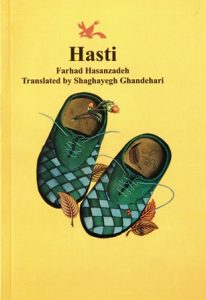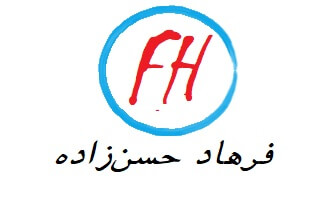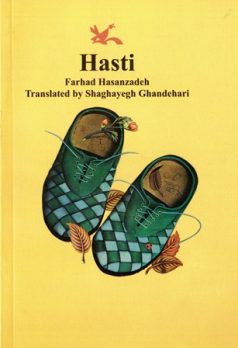Hasti
◊Farhad Hassanzadeh
◊Translated in English by Shaghayegh ghandehari
◊ISBN: 9789643916244
◊First print: 2010
◊Last print: 8th, 2024
◊Main language: Persian
◊Page count: 264
◊Tehran: Kanoon. (Institute for the Intellectual & Cultural Development of Children and Young Adults)

Hasti
“Hasti” is a twelve year old girl from Abadan (a border town and home to one of the largest refineries in Iran). Right from the first pages, Hasti’s uncanny character catches us by surprise, she is unlike any other teenage girl in her city; she is tenacious and plays the soccer. While the conservative society expects the girls her age to play with dolls, do needle work and dream of their wedding days, Hasti swims against the tide; she dresses as boys, cheers vehemently the Abadan football team, rides on motorbikes, plays soccer with boys, she even boasts about her techniques and quarrels. Yet one day this eccentric girl has an accident and breaks her arm while her behavior gets more and more beyond her father’s bearing. Hasti is now under the impression that dad would love her more if she was born a boy. Such speculations are highlighted by the birth of a baby boy in their family. Hasti has only her mother, Aunt Nasrin and Uncle Jamshid as her supporters who love her unconditionally unlike her father’s cruel reproach and judgments.
Iraq attacks and the war begins. A perfect warzone, Abadan is ablaze. Uncle Jamshid stays in the city, now the war frontline and Hasti along with her family flee to another town, a new place where Hasti would eventually live her first experiences of womanhood and love. Not yielding to her father’s weakness and opportunism she misses and fears for her uncle Jamshid’s safety.
Farhad Hassan Zadeh, a highly skilled storyteller arranges the events professionally so as to create an attractive set of actions. This is a novel that would transfix, bewilder and inspire both children and their parents offering them the unique pleasure of reading an astonishing tale together.
With an unexpected event or a shocking revelation in every corner, “Hasti” is the story of deepest human emotions told in a smooth and humorous tone. Even in the most critical instances, the reader is compelled to laugh through tears and heart break.
Stories of the war have been told several times before yet what makes “Hasti” exceptional is its dynamic and lively characters, attractive narrative and a touch of refreshing humor constant throughout the novel in all touching and dramatic scenes. “Hasti” makes us laugh and cry at the same time. Hassan Zadeh does not intend to create yet another elegy on war but his sparkling protagonist stands as a beacon of hope among the destruction, ardent and faithful to a better future. As her mother’s dried out breasts that begin lactating little by little, Hasti grows up gradually through her adventures, jests, playfulness and even stubbornness taking us along her rugged journey.
A significant feature of the novel is its amiable characters: mother is a kind woman transforming cleverly the father’s rage into laughter and amity; Bibi is a conservative old lady who loves children and turns even the simplest talks into cheerful tunes and sings them along; aunt Nasrin is an independent and well-read woman. Amongst these women, Hasti’s desire to be a boy evolves into feminine courage and maturity; a grit that bends his strict father and opens his heart to confess his own childhood doubts and fears. Hasti’s strength and perseverance manages to soften his father’s hard edges. The relationship of characters in this novel is one of its strongest features; like that of Hasti’s parents; the two-sided charming mutual care or the passion of a twelve-year-old boy towards a teenage girl of the same age grasping every opportunity to be with his beloved and the first sparks of the girl’s love for a young soldier along with all the passing characters weave the perfect tapestry of the novel.
In the beginning of the story, Hasti praises Saddam Hussein, she is captivated by his pompous gestures and deceptive smiles. Rage and hatred of the grown-ups are unfamiliar to her so is political corruption and its ruthless violence behind their benevolent masks. Hasti’s world is that of innocence, or in better words, the point of departure from childhood stepping into the complex world of adults where she is forced to acquire her independent identity and shape her own judgments. Thus Hasti makes the biggest choice of her life. After a quarrel with his father, she leaves their home and rides to their wrecked city on her uncle’s motorbike. Abadan is all ruins, her uncle depressed and grim. Hasti witnesses yet another ugly side of the war experiencing a new turn on her emotions as well. She decides to stay at the front line and fight alongside her aunt and uncle yet the sudden appearing of her father changes everything dramatically.


